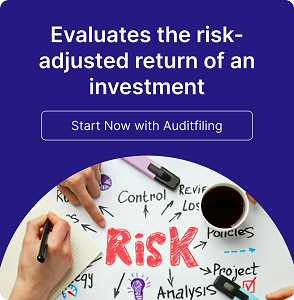
Risk-Based Valuation is a method for finding the fair value of an asset or investment by looking at the risk factors that could affect how well it does economically. It uses both numbers and words to figure out how market risk, credit exposure, and business operations affect the value of assets. This process also supports accurate valuations by analyzing financial risk, risk in business, and applying value at risk models commonly used in bank risk management systems.
A Risk-Based Valuation makes sure that money is clear, helps people make better choices, and helps companies follow the rules. It helps uncover probable financial problems and gives banks and businesses suggestions for better methods to manage operational risk management effectively. It also helps in meeting compliance standards such as financial risk manager requirements and encourages transparency while paying taxes online and maintaining audit-ready records.
Market Risk: This looks at how things are affected by changes in the market, such as interest rates or currency values.
Credit Value Adjustment: This takes into consideration the chance of a credit default and links directly to value at risk calculation methods.
Operational Risk Management: Focuses at how the way things are done inside a company and the way systems are set up affect the results of valuation.
Valuation Metrics: This includes things like value at risk, var value at risk, and scenario stress-testing to assess how much money you could lose.
Banks and asset managers use it to plan their capital and make important decisions related to financial risk and valuations. It is also important for mergers, acquisitions, and getting the most out of your portfolio. Additionally, it helps in following FRM Financial Risk Manager regulations for reporting and compliance while maintaining consistency in bank risk management frameworks.
Shows all the risk factors that are there.
By making smart decisions, it helps firms become more long-lasting and resilient to market risk.
Makes it easy to pay taxes online and makes financial documents easier to read.
Makes sure that frameworks for managing bank risk management are the same and answerable, while enhancing the accuracy of valuations and value at risk assessments.
Income Statement (Revenue, expenses and net income)
Cash Flow Statement
Financial Documents (Balance sheet, Profit & Loss Statement)
Market Analysis Reports
Asset Specific Information
RS: 2500/-